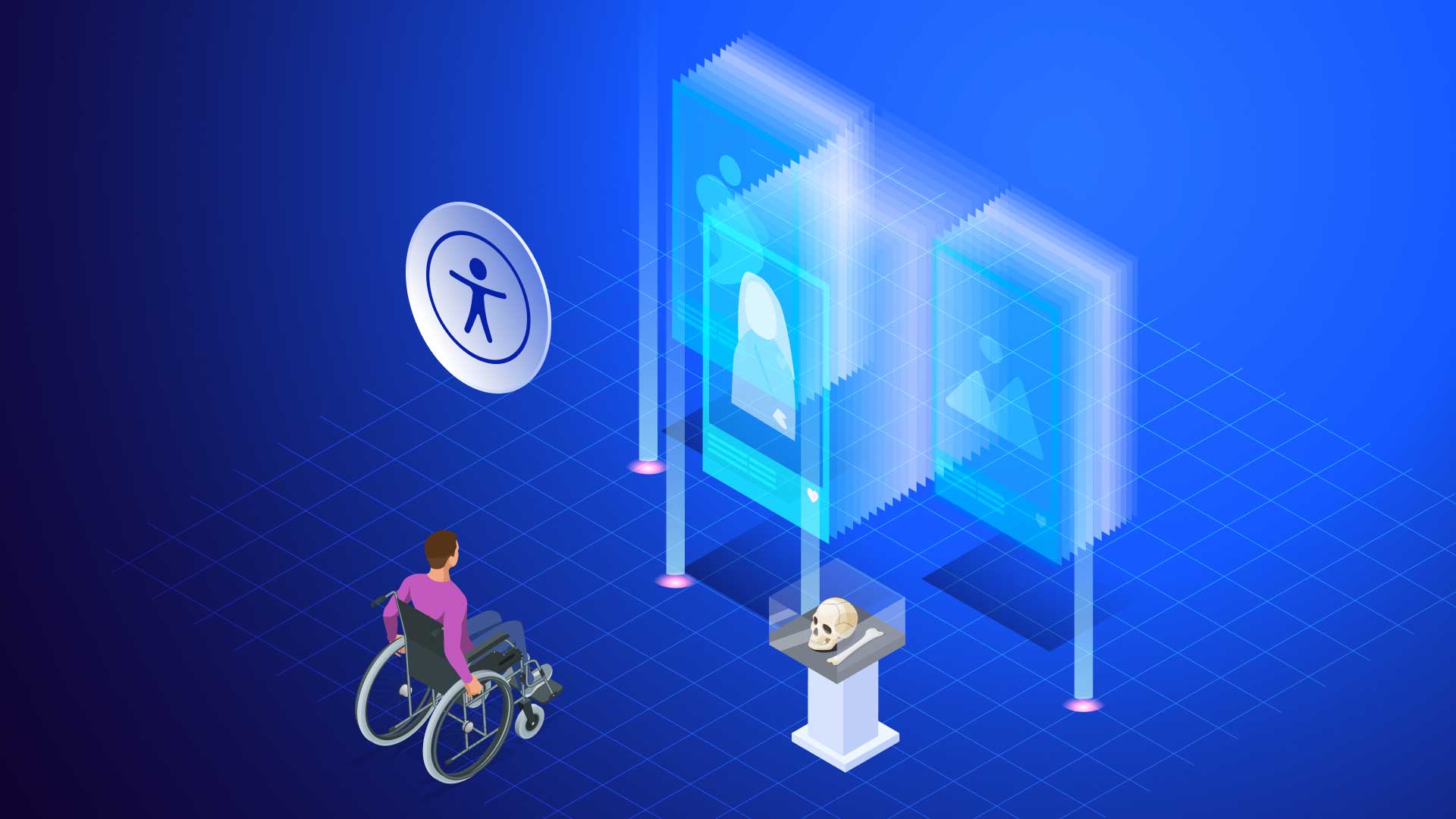Essential Tips for Physical & Digital Museum Accessibility

Museums are a critical educational and cultural resource for communities worldwide. Their exhibitry inspires awe across generations and backgrounds, from art and history to transportation and technology. Undoubtedly, every citizen has a right to benefit from these institutions equally. Yet, museum accessibility is still behind the times for people with disabilities.
Researchers in the US, UK, and Israel have new evidence that museums aren’t as physically accessible as other similar institutions. This lack of accessibility can be incredibly challenging for wheelchair users, those with visual impairments, and hard-of-hearing people. And like most industries, museums still lack digital accessibility on websites, apps, and devices. Fortunately, most modern problems have modern solutions, and you’ve come to the right place for answers.
This blog has tips for increasing physical and digital accessibility in museums. But we start with a deeper dive into the related challenges.
Most Museums Still Aren’t Fully Accessible
Inclusivity has recently been a hot topic in the museum field, and the AAM is making accessibility a priority. But there isn’t a precise and repeatable blueprint for increasing physical access, leaving museum workers in a precarious position. Mobile access appears to be the most significant barrier, particularly for wheelchair users, who rely on public transport that may not accommodate their needs. To make matters worse, they often face parking difficulties when they finally reach their chosen museum.
So, where do we go from here? We need to start at the source, and that means people with disabilities should be spearheading the public discussion concerning their needs and interests. We should empower them to advise on designing accessible public programs, exhibit spaces, and digital experiences from the start. Museum websites and locations must work together to increase inclusivity at every touchpoint.
There are several ways to get feedback from people with disabilities. For instance, you can create a dedicated email address for receiving questions and concerns about accessibility support and obstacles. Include this email address on all your business cards and put them at your reception desk. Of course, you want to make the email address easy to find on your website. And finally, regularly monitor this email address to provide timely, respectful, and meaningful responses to feedback.
Ready to get to work? First, read on for tips that improve physical and digital access to museums.
10 Tips for Increasing Physical Museum Accessibility
1. Offer after-hours exhibition tours specifically for people with disabilities.
2. Ensure your docents and staff undergo sensitivity training.
3. Provide ample doorway widths and appropriate parking spaces with ramp access.
4. Incorporate wide-open exhibit spaces for easy maneuverability.
5. Offer braille transcripts for printed material, large-format print pieces (e.g., signage), and electronic media.
6. Provide dedicated docents to guide guests with disabilities.
7. Provide accessible ramps and handrails for comfortable navigation.
8. Offer seating throughout your exhibit space for people to rest.
9. Allow well-behaved service animals in your facility.
10. Provide sufficiently bright lighting where low lighting isn’t required to preserve exhibitry.
10 Tips For Increasing Accessibility on Museums Websites
1. Provide Alt Text: Alt text describes your website images for people with vision-related disabilities.
2. Provide a Visible Information Hierarchy: Use color, emphasis, and font size to distinguish each heading clearly. This method is the best way to convey your information hierarchy to people of all abilities.
3. Provide Transcripts: These textual descriptions convey messaging for each piece of source media for people with vision-related conditions.
4. Use Audio Descriptions: These are narrated visual descriptions of your source-media content. The style and length of audio descriptions depend on the nature of that content.
5. Use Appropriate Color and Contrast: Follow WCAG guidelines for text and background ratios. And remember not to rely on color alone to convey messaging because that approach doesn’t work for people with color blindness. Color contrast checkers are available that ensure you’re hitting the proper ratios.
6. Make a Zoom-Friendly Website: Your site should work at 200% magnification. Responsive design, where page elements shift to accommodate the size and shape of the browser window, helps address this concern.
7. Keyboard Navigation: This assistive tech tool ensures everyone can access and navigate your website without a mouse.
8. Ensure Clear Links and Label Styles: Use explicit text descriptions like “Hot Summer Deals” or “Upcoming Events.” for links. Avoid generic messaging like “Click Here” and “Learn More.”
9. Define Language in Your Website Code: Specifying the language of each web page in your code produces speech and braille that works with screen-reader software.
10. Minimize Language Obstacles: Museum websites must work seamlessly with standard speech-enabled software to ensure readability.
Accessibility in Museums is Achievable
Just as ramp access is critical for physical accessibility, web best practices are equally essential for digital accessibility. People of all abilities want to attend museums, shop on art gallery websites, and enjoy buying art online. And the museum industry is emblematic of a much bigger accessibility problem, especially in the digital space. Most websites worldwide still aren’t accessible, even with the emergence of AI-driven assistive tech tools. But the resources and support systems are available to achieve greater inclusivity. So, now is the time for museums to step up and increase in-person and online accessibility.
Learn how UserWay covers all of your digital accessibility needs.
UserWay: Digital Accessibility for Every Industry & Market
UserWay can improve digital accessibility and compliance for any organization, from medical providers to educational institutions and marketing agencies. Learn how UserWay’s AI-powered tools, dedicated support systems, and commission-based partnerships can elevate your online inclusivity efforts.
Start with expert accessibility guidance or a free trial to learn about UserWay’s products and services.
Answers to Common FAQs
Why Do Accessible Museums Matter?
Because people with disabilities want and deserve fair and equal access to museums and their websites.
How Can Museums Be More Inclusive and Accessible?
Think of different ways people with disabilities can participate in your exhibit. Ideas include designated quiet hours and sensory-friendly elements like noise-reducing headphones for people on the autism spectrum.
How Can Museums Promote Greater Diversity and Inclusion?
- Always be mindful and communicate with staff about social stereotypes.
- Convey the critical need for bias management.
- Offer equitable compensation packages.
- Initiate sensitivity and awareness training for staff members.
- Recognize holidays from every culture.
- Simplify participation in groups that solve related issues.




Share